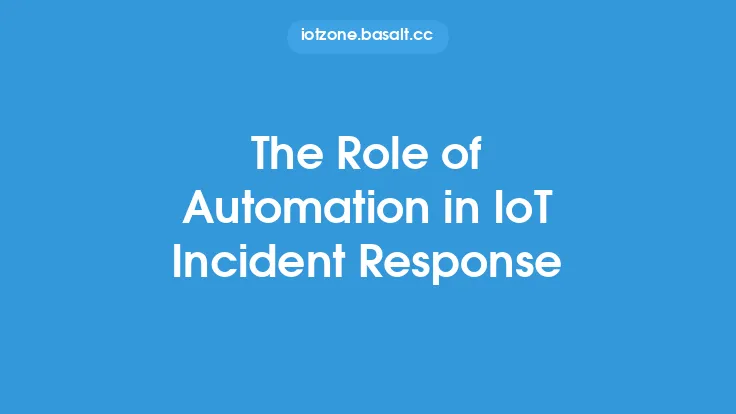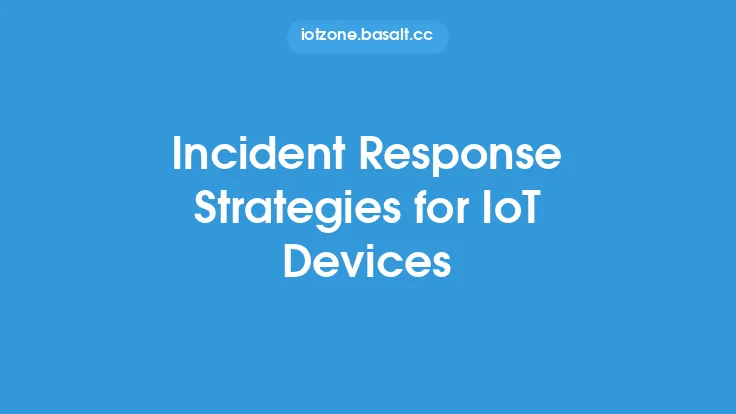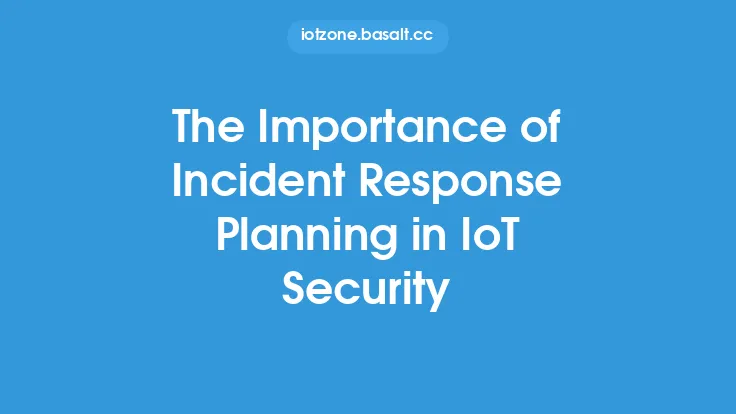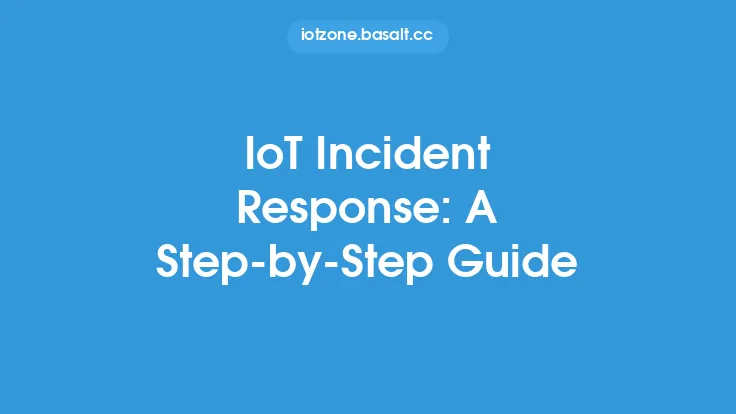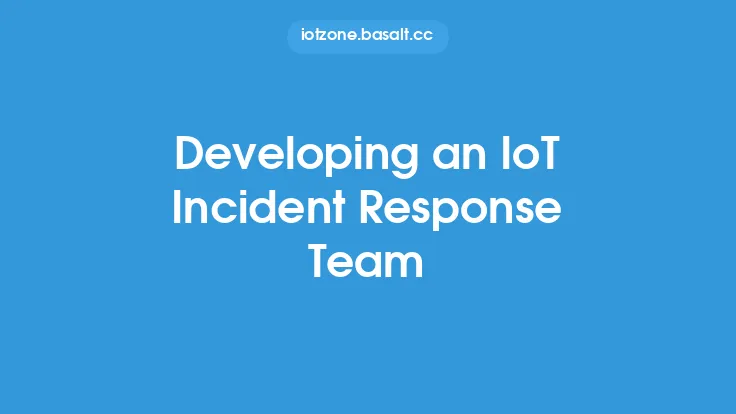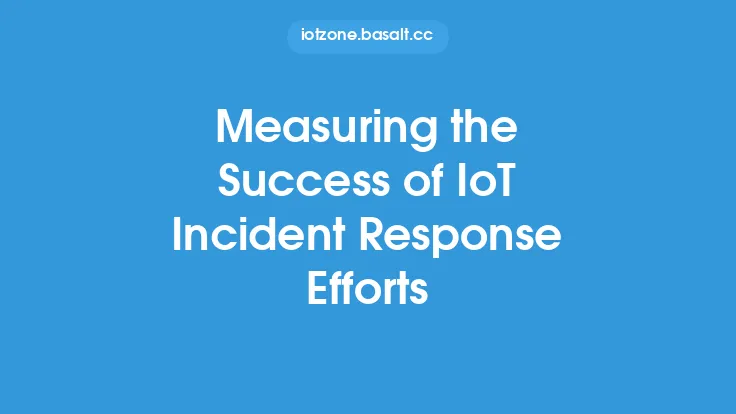The increasing number of Internet of Things (IoT) devices has led to a significant rise in the potential attack surface, making IoT incident response and disaster recovery crucial components of any organization's security strategy. As IoT devices become more pervasive, the risk of security breaches and incidents also increases, emphasizing the need for a well-planned incident response and disaster recovery plan. In this article, we will delve into the world of IoT incident response and disaster recovery, exploring the key concepts, challenges, and best practices for ensuring the security and resilience of IoT systems.
Introduction to IoT Incident Response
IoT incident response refers to the process of responding to and managing security incidents that affect IoT devices and systems. This includes identifying, containing, and eradicating threats, as well as restoring systems to a known good state. IoT incident response requires a unique approach, as IoT devices often have limited resources, are geographically dispersed, and may be difficult to update or patch. Effective IoT incident response involves a combination of people, processes, and technology, and requires a deep understanding of the IoT ecosystem and the potential risks and threats that it faces.
Challenges in IoT Incident Response
IoT incident response poses several challenges, including the diversity of IoT devices, the lack of standardization, and the limited resources available on many devices. Additionally, IoT devices are often deployed in remote or hard-to-reach locations, making it difficult to physically access them in the event of an incident. The sheer number of IoT devices also makes it challenging to monitor and respond to incidents in a timely and effective manner. Furthermore, the complexity of IoT systems, which often involve multiple devices, networks, and protocols, can make it difficult to identify and contain threats.
Disaster Recovery in IoT Systems
Disaster recovery is a critical component of IoT incident response, as it enables organizations to restore systems and services in the event of a disaster or major incident. IoT disaster recovery involves a range of activities, including data backup and recovery, system restoration, and network reconstruction. Effective disaster recovery requires a well-planned and regularly tested disaster recovery plan, which takes into account the unique characteristics and challenges of IoT systems. This includes identifying critical systems and services, developing backup and recovery procedures, and establishing communication and coordination protocols.
Key Components of IoT Incident Response and Disaster Recovery
Several key components are essential for effective IoT incident response and disaster recovery, including:
- Incident detection and reporting: The ability to quickly detect and report incidents is critical for effective IoT incident response. This involves implementing monitoring and detection tools, as well as establishing incident reporting procedures.
- Incident containment: Containing incidents is essential for preventing them from spreading and causing further damage. This involves implementing containment procedures, such as isolating affected devices or networks.
- Eradication and recovery: Eradicating threats and recovering systems is critical for restoring normal operations. This involves implementing eradication procedures, such as removing malware or patching vulnerabilities, and recovering systems from backup.
- Post-incident activities: Post-incident activities, such as incident reporting and lessons learned, are essential for improving IoT incident response and disaster recovery capabilities.
Best Practices for IoT Incident Response and Disaster Recovery
Several best practices can help organizations improve their IoT incident response and disaster recovery capabilities, including:
- Developing an incident response plan: A well-planned incident response plan is essential for effective IoT incident response. This involves identifying potential risks and threats, developing incident response procedures, and establishing communication and coordination protocols.
- Implementing monitoring and detection tools: Monitoring and detection tools are critical for quickly detecting and reporting incidents. This involves implementing tools such as intrusion detection systems, log analysis tools, and network monitoring tools.
- Conducting regular testing and exercises: Regular testing and exercises are essential for ensuring that incident response plans are effective and that personnel are trained and prepared to respond to incidents.
- Establishing communication and coordination protocols: Communication and coordination protocols are critical for ensuring that incident response efforts are effective and efficient. This involves establishing procedures for communicating with stakeholders, coordinating with response teams, and managing incident response efforts.
Technical Considerations for IoT Incident Response and Disaster Recovery
Several technical considerations are essential for effective IoT incident response and disaster recovery, including:
- Device management: Effective device management is critical for ensuring that IoT devices are secure and can be quickly updated or patched in the event of an incident.
- Network segmentation: Network segmentation is essential for containing incidents and preventing them from spreading. This involves implementing network segmentation procedures, such as VLANs or subnets.
- Encryption: Encryption is critical for protecting data in transit and at rest. This involves implementing encryption protocols, such as TLS or IPsec.
- Secure coding practices: Secure coding practices are essential for ensuring that IoT devices and systems are secure and resilient. This involves implementing secure coding practices, such as input validation and error handling.
Conclusion
IoT incident response and disaster recovery are critical components of any organization's security strategy. Effective IoT incident response and disaster recovery require a combination of people, processes, and technology, and involve a range of activities, including incident detection and reporting, incident containment, eradication and recovery, and post-incident activities. By understanding the key concepts, challenges, and best practices for IoT incident response and disaster recovery, organizations can improve their security and resilience, and reduce the risk of security breaches and incidents.
